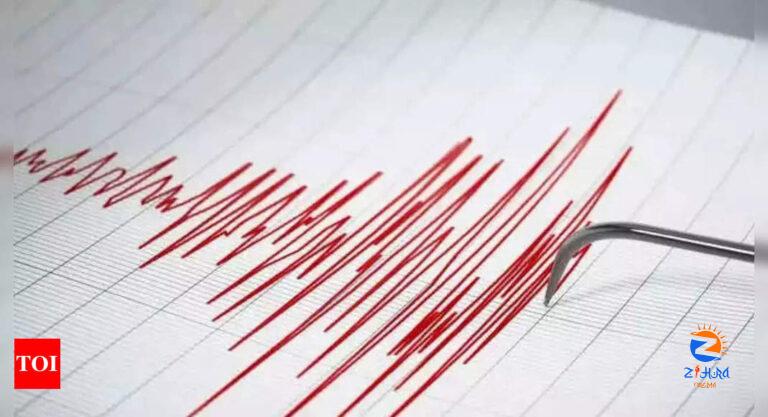
[ad_1]
A recent overseas study has unveiled a groundbreaking revelation in earthquake prediction, as seismic signals were found to provide advanced clues leading up to a devastating quake that struck Turkey earlier this year, reported RNZ. The signals, unique in their nature, were detected up to eight months before the 7.8 magnitude earthquake in February, which resulted in widespread damage across southern Turkey and Syria, claiming tens of thousands of lives.
According to GNS Science seismologist Dr. Matt Gerstenberger, scientists had previously observed “predictable patterns of really tiny micro earthquakes” in laboratory earthquake simulations. However, this marked the first time such signals were observed in real-world seismic activity.
In an interview with Morning Report, Dr. Gerstenberger emphasized the significance of this observation, stating, “This is the first time that they’ve been able to observe that actual phenomena happening in the Earth crusts.”
Seismically-active regions globally typically utilize seismic networks to monitor ongoing earthquakes, providing valuable data for long-term earthquake forecasts. However, short-term forecasting has remained challenging, with limited success in predicting events like aftershock sequences.
Dr. Gerstenberger acknowledged that despite this groundbreaking discovery, there is still much to learn, especially in real-time earthquake forecasting. He highlighted the need to understand the events leading up to earthquakes as they happen, stating, “It’s one thing to know the big earthquake happened and look what happens prior to it, but it’s a bit more difficult when they’re happening in real time and to understand what’s in the future.”
Nevertheless, the research is expected to significantly contribute to the improvement of seismic modeling. The National Seismic Hazard Model (NSHM) in New Zealand, for instance, currently relies on similar basic information but on a much coarser scale compared to the detailed observations made in Turkey. Dr. Gerstenberger expressed optimism about the future impact of such research, stating, “As we have more observations like what they saw in Turkey, then we’ll be able to improve the models that we’re currently using
According to GNS Science seismologist Dr. Matt Gerstenberger, scientists had previously observed “predictable patterns of really tiny micro earthquakes” in laboratory earthquake simulations. However, this marked the first time such signals were observed in real-world seismic activity.
In an interview with Morning Report, Dr. Gerstenberger emphasized the significance of this observation, stating, “This is the first time that they’ve been able to observe that actual phenomena happening in the Earth crusts.”
Seismically-active regions globally typically utilize seismic networks to monitor ongoing earthquakes, providing valuable data for long-term earthquake forecasts. However, short-term forecasting has remained challenging, with limited success in predicting events like aftershock sequences.
Dr. Gerstenberger acknowledged that despite this groundbreaking discovery, there is still much to learn, especially in real-time earthquake forecasting. He highlighted the need to understand the events leading up to earthquakes as they happen, stating, “It’s one thing to know the big earthquake happened and look what happens prior to it, but it’s a bit more difficult when they’re happening in real time and to understand what’s in the future.”
Nevertheless, the research is expected to significantly contribute to the improvement of seismic modeling. The National Seismic Hazard Model (NSHM) in New Zealand, for instance, currently relies on similar basic information but on a much coarser scale compared to the detailed observations made in Turkey. Dr. Gerstenberger expressed optimism about the future impact of such research, stating, “As we have more observations like what they saw in Turkey, then we’ll be able to improve the models that we’re currently using
[ad_2]
